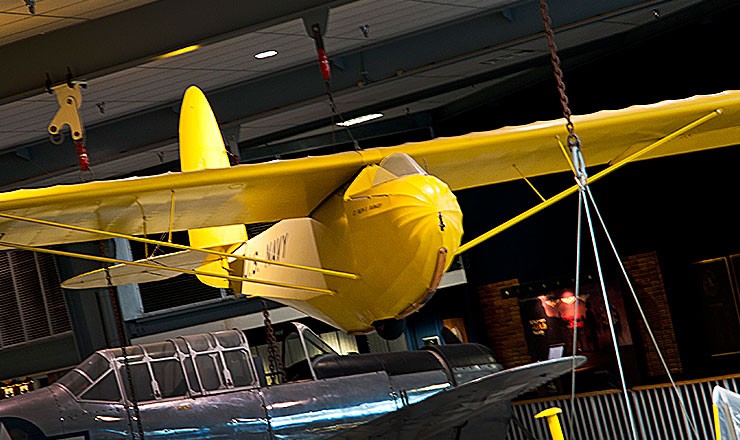PS-2

Low (PNG, 319x319px, 142KB)
Med (JPEG, 1280x1280px, 102KB)
Procurement of the PS-2 represented the Navy's brief interest in the use of glider aircraft as an element of flight training during the 1930s. Although widely used in Europe as the first stage in teaching potential military pilots to fly, gliders were little used for primary instruction by the U.S. military services. It was believed that students learned flight fundamentals more quickly in powered aircraft.
By the 1920s, gliding had attracted U.S. public interest and sport participation. The Navy carried on a small-scale glider program commencing with experiments in connection with releasing gliders from the rigid airship Los Angeles (ZR-3), and running through the end of World War II. Although widely used in Europe as the first stage in teaching potential military pilots to fly, gliders were little used for primary instruction by the U.S. military services.
American industry improved on German secondary gliders imported in the early 1930s and developed models specifically designed to operate under North American conditions of geography and meteorology. Included among them was the Franklin PS-2 (for Primary-Secondary), which featured a steel-tube fuselage and a built-in single landing wheel. The prototype first flew in 1931, with production models varying somewhat in dimensions. In 1934 the Navy ordered six for evaluation and training without assigning standard designations (L for glider and N for Navy).
The Museum's PS-2 glider was accessioned in 1990 and is displayed in the markings of a PS-2 that logged 1,400 flight hours at Naval Air Station (NAS) Pensacola, Florida, during the period 1934 to 1938.
SPECIFICATIONS
| Manufacturer: | Franklin Glider Corporation |
| Type: | Trainer |
| Crew: | Pilot |
| Dimensions: | Wingspan: 36 ft. |
| Weight: | Empty: 220 lb. Gross: 400 lb. |
| Performance: | Glide Ratio: 15:1 |
- Aviation
- Photograph
- Image (gif, jpg, tiff)


